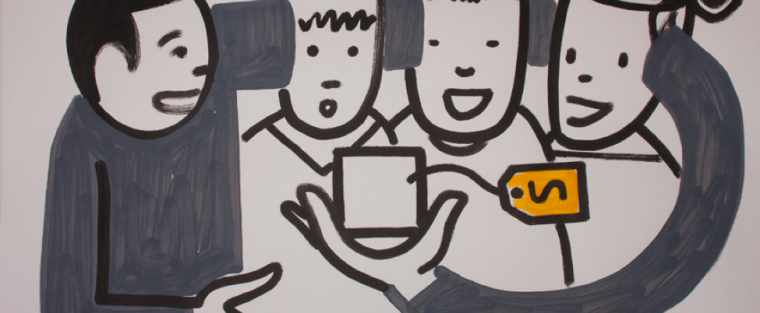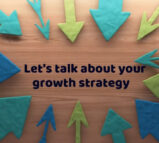A Harvard Business Review Article
By Tara-Nicholle Nelson
The starting point of most competitive analysis is a question: Who is your competition? That’s because most companies view their competition as another brand, product, or service. But smart leaders and organizations go broader.
The question is not who your competition is but what it is. And the answer is this: Your competition is any and every obstacle your customers encounter along their journeys to solving the human, high-level problems your company exists to solve.
When I led marketing at MyFitnessPal and was asked about our competition, I think people always expected me to rattle off a list of other nutrition-tracking smartphone apps and weight-loss programs.
What I actually said was that we were on a mission to make it easier to live a healthy life than an unhealthy one. So our chief competition was anything that makes it harder to live a healthy life. This included biology (fat tastes good, sugar is delicious, and our brains are wired to want more of both); mindless eating; and the billion-dollar advertising and marketing budgets of companies that make fast food, junk food, and processed food. Our competition was the fact that in many situations healthy food is actually more expensive and less convenient than unhealthy food is.
If we had viewed Weight Watchers as our competition, we probably would have spent a lot of time trying to do what it does, just a little better. Maybe we would have raised money to get more-famous celebrity spokespeople, or tried to come up with some sort of next-generation points system.
Sure, someone in your company needs to understand the marketplace: who your competition is, what other products are on the market, and how they are doing, at a basic level. But there’s a point at which paying attention to other companies and what they’re doing interferes with your team’s ability to immerse itself in the world of your consumer. Focusing on competitive products and companies often leads to “me-too” products, which purport to compete with or iterate on something that customers might not have liked much in the first place.
In my recent study of over 2,000 consumers, over 50% of them said that they use digital and real-world products and content at least three times a week in an effort to achieve their goals around living healthier, wealthier, and wiser. The brands that remove obstacles and encourage progress along their customers’ journeys are the ones that win repeat visits, repeat purchases, and word-of-mouth referrals.
Once you’ve redefined your competition as your customers’ obstacles, it’s relatively easy to stop propagandizing the war with another product or company. Stop setting goals by reference to other companies. Minimize how much meeting time is devoted to talking about rival companies and products. Discourage product design approaches that focus on assessing or iterating on what is already out there.
Instead, reinvest your team’s time and effort. Here’s how.
First, rethink what you sell. Most companies think they sell a product. To transcend strictly one-time, transactional relationships with your customers, your company must think about selling a transformation: a journey from a problematic status quo to the new levels and possibilities that will unfurl after the behavior change you help make happen.
A real-estate search engine might actually “sell” wise decision making, through the process of making the largest transaction their customers will ever make. CVS Health “sells,” well, health.
Next, rethink your customers. They are not just the people who have purchased your product or the people who follow you on Facebook. Your customers are all the people who grapple with the problem your business exists to solve.
Now, focus on their problems. Engage in customer research, online and in the real world, to understand and document their journeys. I don’t mean their customer life cycle with your brand. Map out your (redefined) customer’s journey from having the problem you exist to solve to no longer having that problem. That may be the journey from unhealthy to healthy living, or from being broke to being a good steward of their finances.
One of the most important takeaways from your customer insights research should be a deep understanding of the decision traps, pitfalls, friction spots, and quit points that people frequently encounter on their journeys. Look to user data, surveys, ethnographic research, online listening, subject matter experts, and even third-party data to discover roadblocks. Use this information to do a continuous “competitive analysis”:
- Understand the obstacles your customers face
- Learn how and where people get stuck
- Solve those problems
- Understand how people overcome the obstacles and get unstuck
- Understand what stops others from achieving this success
- Solve those problems
- And so on
Here’s the “competition” rubric we operated under at MyFitnessPal:
Competition is: Everything that makes it harder for people to live a healthy life rather than an unhealthy one.
More specifically: Biology, food autopilot, the cost of healthy food, the tastiness and convenience of unhealthy food, and everything that makes it hard to build healthy habits such as food tracking and home cooking.
Innovations driven by obstacle-as-competition insight:
- In-app bar code scanner to make it easy to track packaged foods
- Massive food database, so users never have to enter nutritional data
- Social features and challenges for support, accountability, and competition
- Recipe-logging features for home-cooked meals
- Content, marketing, and PR campaigns featuring user success stories, advice on making and breaking habits, cost-effective recipes and cooking tutorials, and other messages tailored to remove the frictions commonly encountered on the journey from unhealthy to healthy.
And it’s working. People who have even a single friend on MyFitnessPal lose twice as much weight as people who don’t use the app’s social features. MyFitnessPal users who log home-cooked recipes lose 40% more weight than those who don’t. The bar code scanner and food database are consistently mentioned by users who have lost weight despite having been unsuccessful with all manner of diets before. And over 120 million people worldwide now use the platform.
Amazon CEO Jeff Bezos once said, “If we can keep our competitors focused on us while we stay focused on the customer, ultimately we’ll turn out all right.” I take this one step further: If you can stay focused on eliminating the obstacles along your customers’ journeys, your company will turn out much more than all right.







